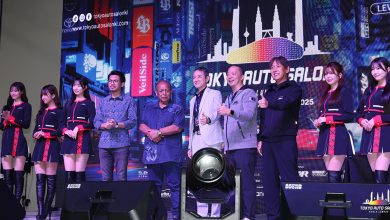Are Japanese Cars Still King? Comparing JDM Legends to Modern Imports in 2025

For decades, Japanese Domestic Market (JDM) cars have dominated the streets, tuning garages, and racetracks. Iconic models like the Nissan Skyline GT-R R34, Toyota Supra MK4, and Mazda RX-7 FD built reputations not just for performance, but for style, reliability, and modification potential. However, in 2025, as the global automotive landscape shifts toward electrification, automation, and advanced safety tech, the relevance of traditional JDM cars is being challenged. The question now arises—do Japanese cars still rule the automotive world?
The Golden Era of JDM
The 1990s to early 2000s are often regarded as the golden age of JDM, producing some of the most respected and collectible performance cars in history. These vehicles weren’t just fast—they delivered raw, emotional driving experiences with mechanical simplicity and tuning flexibility.

Legendary Models from the Golden Era:
- Nissan GT-R R34 – Known for its iconic all-wheel drive system, twin-turbocharged RB26 engine, and lasting impact on car culture worldwide.
- Toyota Supra MK4 (JZA80) – Featuring the bulletproof 2JZ-GTE engine, this car became a favorite for tuners and drag racers alike.
- Mazda RX-7 FD – A lightweight, rotary-powered coupe with timeless design and razor-sharp handling.
- Honda Civic EK9 & Integra DC2 – Proved that front-wheel-drive platforms could be capable performance machines with race-winning potential.
- Mitsubishi Lancer Evolution & Subaru Impreza WRX STi – Turbocharged rally-derived cars that became icons on and off the dirt.

These vehicles captured the essence of “soulful” driving—prioritizing driver engagement over digital assistance.
JDM in 2025: Evolution or Decline?
Modern Japanese performance cars are still strong contenders in the global market, but they have evolved with the times. While power, efficiency, and build quality have improved, many enthusiasts feel that some of the raw character of earlier generations has been replaced by refinement and regulation-driven compromises.
Notable Models in Today’s Market:
- Nissan Z (RZ34) – A twin-turbo V6 coupe aimed at reviving the Z legacy, though now competing with German and American sports cars in a more tech-heavy segment.
- Toyota GR Yaris & GR Corolla – Small, turbocharged, all-wheel drive hatchbacks that recapture the excitement of earlier rally-inspired models.
- Toyota Supra (A90) – Co-developed with BMW; while it offers strong performance, some purists question its JDM authenticity.
- Honda Civic Type R (FL5) – Still delivers track-worthy performance, but with more refinement and less mechanical rawness.

While undeniably capable, many of these cars now come equipped with automatic transmissions, electronic driver aids, and tighter emissions controls—elements that dilute the mechanical purity that defined earlier JDM icons.
The Global Challenge: Korea and China Step In
The rise of Korean and Chinese automakers in the performance and EV segments presents a real challenge to Japanese dominance. Brands like Hyundai and Kia are producing serious performance machines with modern appeal, while Chinese firms such as BYD, Nio, and XPeng are setting new benchmarks in electric performance and tech integration.
Key Competitors Gaining Ground:

- Hyundai i30N and Ioniq 5 N – Proven performance credentials combined with bold design and everyday usability.
- Kia EV6 GT – A high-powered EV with track capability and premium build quality.
- BYD Seal and XPeng P7 – Deliver futuristic styling, long electric range, and tech-rich cabins, competing directly with legacy Japanese automakers.


These brands are not only improving in quality—they are evolving faster in the electric and digital space, where Japanese automakers are traditionally more conservative.
Modding Culture: Still JDM at Heart
Despite changes in the industry, JDM culture remains alive and well. Enthusiasts across Southeast Asia, the U.S., and Europe continue to celebrate the heritage of Japanese cars through restoration, modification, and motorsports.

Cultural Hotspots and Events:
- Countries like Malaysia, Thailand, and Indonesia host popular events such as JDM Fest, Retro Havoc, and TimeToAttack, highlighting the ongoing passion for older JDM cars.
- Classic imports like the Nissan R32, R33, and Toyota AE86 are still in high demand, with parts and support networks thriving online and in local communities.
- Tuning shops and drift events maintain the hands-on, grassroots spirit that JDM culture is known for.
Final Verdict: Are Japanese Cars Still King?
The answer is mixed.
Japanese automakers remain global leaders in reliability, everyday usability, and entry-level performance vehicles. But when it comes to raw, unfiltered driving passion and emotional connection, the crown still rests with the JDM legends of the 1990s and early 2000s. These vehicles continue to command respect, high resale value, and deep loyalty among enthusiasts.
Modern competitors—especially from Korea and China—are advancing rapidly. In terms of innovation and technology, they are narrowing the gap, and in some areas, even surpassing their Japanese counterparts.
However, the legacy of JDM is far from over. If anything, it’s being preserved and celebrated more fiercely than ever, ensuring that its influence will continue well into the future.





